Home>diy>Building & Construction>What Is A Construction Agreement


Building & Construction
What Is A Construction Agreement
Modified: December 7, 2023
Looking for information on construction agreements? Learn about what they are and how they work in the building construction industry. Get insights and tips in this comprehensive guide.
(Many of the links in this article redirect to a specific reviewed product. Your purchase of these products through affiliate links helps to generate commission for Storables.com, at no extra cost. Learn more)
Introduction
When it comes to any construction project, whether it’s a residential house, commercial building, or infrastructure development, a construction agreement is a crucial document that sets the foundation for the entire project. It serves as a legally binding contract that outlines the obligations, responsibilities, and rights of all parties involved in the construction process.
In simple terms, a construction agreement is a contract between the owner of the project and the contractor who will be responsible for executing the construction work. It outlines the terms and conditions of the project, including the scope of work, timeline, payment terms, and project specifications.
The primary purpose of a construction agreement is to protect the interests of all parties involved. It establishes clear expectations and responsibilities, ensuring that both the owner and the contractor are on the same page throughout the project. By clearly defining the project scope, timeline, and budget, a construction agreement helps to minimize disputes and mitigate risks.
Furthermore, a well-drafted construction agreement provides a legal framework for recourse in case of any breaches or disputes. It ensures that there are mechanisms in place to resolve conflicts, handle changes to the project, manage payments, and address any other issues that may arise during the construction process.
Importantly, a construction agreement plays a crucial role in reducing uncertainties and risks associated with construction projects. It promotes transparency, accountability, and professionalism by clearly defining the roles, responsibilities, and expectations of all parties involved.
In the next sections, we will delve deeper into the key elements of a construction agreement, the different types of construction agreements, and the benefits of using one for your construction project. We will also discuss important clauses that should be included in a construction agreement, as well as common challenges and pitfalls to watch out for when negotiating and drafting this essential document.
Whether you’re a property owner or a contractor, understanding the ins and outs of a construction agreement is essential to ensure a smooth and successful construction project. So let’s dive in and explore everything you need to know about construction agreements.
Key Takeaways:
- Clear and comprehensive construction agreements are crucial for successful projects. They establish expectations, protect all parties, and mitigate risks, promoting a smooth construction process.
- Understanding common challenges and pitfalls in construction agreements is essential. Open communication, thorough understanding, and seeking professional guidance can help address these challenges and minimize their impact on the project.
Read more: What Is Construction
Definition of a Construction Agreement
A construction agreement, also known as a construction contract or a construction services agreement, is a legally binding contract between the owner (or client) and the contractor (or builder) that outlines all the terms and conditions of a construction project. It serves as a comprehensive document that governs the relationship between the parties involved and sets forth their respective rights and obligations.
The construction agreement is typically prepared before the commencement of any construction work and acts as a roadmap for the entire construction project. It provides a clear understanding of the project scope, specifications, and timelines, as well as the payment terms and dispute resolution mechanisms. This agreement ensures that all parties involved are aware of their roles and responsibilities to avoid any misunderstandings or conflicts along the way.
In general, a construction agreement includes the following essential components:
- Parties: The agreement identifies the owner/client and the contractor by their legal names, addresses, and contact information. It may also include details of any subcontractors or suppliers involved in the project.
- Scope of Work: This section outlines the specific work to be performed, including design, construction, installation, and any other services required to complete the project. It may also provide details about the materials, equipment, and specifications to be used.
- Project Timeline: The construction agreement sets forth the start date, estimated completion date, and any intermediate milestones or deadlines for different phases of the project.
- Price and Payment Terms: It includes the total project cost, payment schedule, and any provisions for additional costs or change orders. This section may also cover terms related to retainage (withholding a certain percentage of payment until project completion) and lien waivers.
- Insurance and Indemnity: The agreement typically addresses insurance requirements, including liability insurance and workers’ compensation coverage. It may also include provisions for indemnification, where one party agrees to compensate the other for losses or damages.
- Termination and Default: This section outlines the circumstances under which either party can terminate the agreement, as well as the consequences of default or breach of contract.
- Dispute Resolution: It specifies the mechanism for resolving disputes, such as mediation, arbitration, or litigation, and identifies the jurisdiction or governing law applicable to the agreement.
- Other Provisions: Additional clauses may be included to address specific project requirements, such as permits and licenses, safety regulations, quality control, warranties, and environmental considerations.
It is important to note that the specific terms and provisions of a construction agreement can vary depending on the nature, size, and complexity of the project, as well as the applicable laws and regulations of the jurisdiction. Therefore, it is recommended to consult with legal professionals to ensure that the construction agreement adequately addresses all relevant aspects of the project and protects the interests of all parties involved.
Purpose of a Construction Agreement
A construction agreement serves several important purposes in any construction project. It is a vital document that sets the foundation for a successful and mutually beneficial partnership between the owner/client and the contractor. Let’s explore some key purposes of a construction agreement:
- Establishing Clear Expectations: One of the primary purposes of a construction agreement is to clearly define the expectations and obligations of both parties involved. It outlines the scope of work, project specifications, timelines, and deliverables, leaving no room for ambiguity or miscommunication. This ensures that all parties have a common understanding of their roles and responsibilities, minimizing the risk of disputes and delays.
- Protecting the Interests of All Parties: A construction agreement is designed to protect the interests of both the owner/client and the contractor. It lays out the legal framework and terms of engagement, ensuring that the rights, obligations, and liabilities of each party are clearly defined and understood. This helps to mitigate risks, establish accountability, and provide recourse in case of any breaches or conflicts.
- Minimizing Disputes and Misunderstandings: By clearly stating the expectations, requirements, and deliverables, a construction agreement helps prevent disputes and misunderstandings during the project. It acts as a reference point for both parties, offering a transparent and objective basis for evaluating the progress and quality of the work. In case of any disagreements, the agreement also provides mechanisms for dispute resolution, such as mediation or arbitration, which can help resolve conflicts amicably and in a timely manner.
- Setting a Framework for Payment and Financial Terms: The financial aspect of a construction project is critical, and a construction agreement plays a vital role in defining the payment terms. It outlines the agreed-upon project cost, payment schedule, and any provisions for adjustments or additional costs due to change orders or unforeseen circumstances. This clarity and transparency in financial matters help establish trust and ensure fair compensation for the contractor’s work.
- Ensuring Compliance with Legal and Regulatory Requirements: Construction projects are subject to various legal and regulatory requirements, such as building codes, permits, and safety regulations. A construction agreement often includes provisions that require both parties to adhere to these requirements. This helps ensure that the project complies with all applicable laws and regulations, mitigating the risk of penalties or legal issues.
Overall, the purpose of a construction agreement is to provide a structured and legally binding framework for the successful execution of a construction project. It enables clear communication, establishes accountability, and offers protection to all parties involved. By laying out the terms, conditions, and expectations upfront, a construction agreement helps to streamline the construction process, minimize risks, and create a solid foundation for a successful project completion.
Key Elements of a Construction Agreement
A construction agreement is a comprehensive document that encompasses various important elements to ensure a clear and mutually beneficial relationship between the owner/client and the contractor. Let’s explore the key elements that are typically included in a construction agreement:
- Identification of Parties: The construction agreement should clearly identify the parties involved in the project, including the owner/client and the contractor. It may also include the details of any subcontractors or suppliers who will be involved in the construction process.
- Scope of Work: This section outlines in detail the specific work to be performed as part of the project. It includes the construction plans, specifications, drawings, and any other relevant documents that define the scope of the project. It helps avoid any misunderstandings regarding the expectations and requirements of the project.
- Project Timeline: The construction agreement should include a clear timeline for the project, including the start date, tentative completion date, and any intermediate milestones or deadlines. This helps both parties in managing their schedules and ensuring that the project progresses smoothly and according to plan.
- Payment Terms: The financial aspect of the construction project is crucial, and the construction agreement outlines the payment terms agreed upon by both parties. It includes the total project cost, payment schedule, and any provisions for adjustments or additional costs due to change orders or unforeseen circumstances. It is essential to be specific about payment terms to avoid any disputes or delays in payment.
- Insurance and Indemnity: This section addresses the insurance requirements for the project, including liability insurance and workers’ compensation coverage. It may also include provisions for indemnification, where one party agrees to compensate the other for losses or damages caused by their negligence or actions.
- Termination and Default: The construction agreement should include provisions that outline the circumstances under which the agreement can be terminated and the consequences of default or breach of contract by either party. This helps protect the interests of both parties and provides a clear course of action in case of any disputes or non-compliance.
- Dispute Resolution: It is important to include a dispute resolution mechanism in the construction agreement. This can be in the form of mediation, arbitration, or litigation, depending on the preferences of the parties involved. Clearly defining the process for resolving disputes helps to avoid lengthy and costly legal battles and provides a structured approach to resolving conflicts.
- Warranties and Guarantees: The construction agreement may include provisions for warranties and guarantees on the workmanship and materials used in the project. This provides assurance to the owner/client that the contractor stands behind their work and is responsible for any defects or issues that may arise during a specified period after project completion.
- Change Orders: It is common for construction projects to experience changes or modifications along the way. The construction agreement should include provisions that outline the process for requesting and approving change orders. Clear guidelines for documenting and pricing changes help manage expectations and ensure that any deviations from the original scope of work are properly addressed.
- Governing Law and Jurisdiction: The construction agreement may specify the laws and regulations that govern the agreement and the jurisdiction in which any legal disputes would be resolved. This provides clarity in case legal action is necessary.
These are some of the key elements typically included in a construction agreement. However, it’s important to note that the specific elements and their details may vary depending on the complexity and nature of the construction project, as well as the applicable laws and regulations. It is always advisable to consult with legal professionals and other relevant parties to ensure that all necessary elements are covered in the construction agreement to protect the interests of both parties involved.
Types of Construction Agreements
Construction agreements can take various forms, depending on the nature of the construction project and the relationship between the parties involved. Let’s explore some common types of construction agreements:
- Lump Sum Contract: Also known as a fixed price contract, a lump sum contract is the most common type of construction agreement. In this arrangement, the contractor agrees to complete the entire project for a fixed price agreed upon upfront. This type of contract is suitable when the project scope is well-defined, and there is limited risk of changes or unforeseen circumstances.
- Cost Plus Contract: In a cost plus contract, the owner agrees to pay the contractor for the actual cost of the project, including labor, materials, and overheads. Additionally, a predetermined fee or percentage of the project costs may be added to cover the contractor’s profit. This type of contract is beneficial when the project scope is uncertain or when there is a need for flexibility in design or changes during construction.
- Time and Material Contract: This type of agreement is commonly used in projects where the scope of work is uncertain or difficult to define. Under a time and material contract, the owner pays the contractor based on the actual time spent by the workers and the materials used, along with an agreed-upon hourly rate and markup for overhead and profit.
- Unit Price Contract: In a unit price contract, the contractor agrees to perform the work at a specified unit price for each item or component of the project. The total cost is calculated by multiplying the unit price by the quantity of items or components used in the project. This type of contract is commonly used in projects where the quantities of specific items are known but may vary during construction.
- Design-Build Contract: In a design-build contract, a single entity, known as the design-builder, is responsible for both the design and construction of the project. This streamlined approach eliminates the need for separate contracts between the owner and designer and the owner and contractor. This arrangement can result in cost and time savings, increased collaboration, and faster project delivery.
- Joint Venture Agreement: A joint venture agreement is a contractual arrangement between two or more parties to work together on a construction project. In this type of agreement, the parties pool their resources, expertise, and financial contributions to complete the project. Joint ventures are often formed when the project is large and complex or when the parties involved have complementary skills or specialized knowledge.
It’s important to note that these are just a few examples of the types of construction agreements commonly used in the industry. The specific type of agreement chosen for a construction project depends on factors such as the project’s complexity, size, budget, risks, and the preferences and priorities of the parties involved. It is always advisable to consult with legal professionals or industry experts to determine the most appropriate type of construction agreement for a specific project.
When entering into a construction agreement, be sure to clearly outline the scope of work, timeline, payment schedule, and any potential change orders. It’s important to have a detailed contract to protect both parties involved.
Read more: What Is Drainage In Construction
Benefits of Using a Construction Agreement
Using a construction agreement is crucial for the successful execution of any construction project. It offers numerous benefits for all parties involved, including the owner/client, the contractor, and any subcontractors or suppliers. Let’s explore some of the key benefits of utilizing a construction agreement:
- Clarity and Clear Expectations: A construction agreement helps establish clear expectations and requirements for the project. It outlines the scope of work, project specifications, timelines, and deliverables, leaving no room for ambiguity or misunderstandings. This clarity ensures that all parties have a common understanding of their roles and responsibilities, thereby minimizing the risk of disputes and delays.
- Risk Mitigation: Construction projects involve inherent risks, such as cost overruns, delays, and disputes. A well-drafted construction agreement includes provisions to identify, allocate, and mitigate these risks. It helps protect all parties by clearly defining the liability, responsibilities, and dispute resolution mechanisms to be followed in case of any issues or breaches.
- Legal Protection: A construction agreement provides legal protection for all parties involved. It establishes a legally binding contract that governs the project and provides a framework for enforcing rights, obligations, and remedies in case of disputes or contractual breaches. This legal protection helps ensure that both the owner/client and the contractor are safeguarded throughout the construction process.
- Change Management: Construction projects often face changes or modifications along the way. A construction agreement includes provisions on how changes will be addressed, documented, and priced. It establishes a formal process for change orders and helps manage expectations and potential disputes. This ensures that any deviations from the original scope of work are adequately addressed, minimizing the impact on the project timeline and budget.
- Payment Protection: Construction agreements provide clarity and transparency regarding payment terms. They outline the project cost, payment schedule, and any provisions for adjustments or additional costs. This helps protect the contractor by ensuring fair compensation for the work performed, while also protecting the owner by clearly defining the payment obligations and conditions.
- Dispute Resolution: Construction agreements often include provisions for resolving disputes in a structured manner, such as through mediation or arbitration. These mechanisms help parties resolve conflicts amicably and efficiently, without resorting to costly and time-consuming litigation. By having a clear dispute resolution process outlined in the agreement, the parties can save time, money, and unnecessary stress.
- Accountability and Quality Control: Construction agreements establish accountability for both the owner/client and the contractor. They set performance standards and quality requirements, ensuring that the work is carried out to the agreed-upon specifications and industry standards. This promotes professionalism, quality control, and accountability, contributing to a successful and satisfactory project outcome.
- Documenting Project Details: A construction agreement serves as a comprehensive documentation of the project details, including the scope of work, project timeline, and specifications. It acts as a central reference document for all parties involved, providing a record of the agreed-upon terms, facilitating communication and project management.
Overall, using a construction agreement provides numerous benefits for all parties involved in a construction project. It establishes clarity, mitigates risks, ensures legal protection, facilitates change management, and promotes accountability and quality control. By incorporating a construction agreement, all parties can have confidence in the project’s progress, leading to more successful and harmonious outcomes.
Important Clauses in a Construction Agreement
A well-drafted construction agreement includes several important clauses that protect the interests of all parties involved and ensure a smooth and successful construction project. These clauses address various aspects of the project, including scope, payment, changes, dispute resolution, and termination. Let’s explore some of the key clauses commonly found in a construction agreement:
- Scope of Work: This clause clearly defines and describes the scope of work to be performed, including specifications, plans, and any other relevant documents. It outlines the tasks, responsibilities, and deliverables expected from the contractor.
- Payment Terms: The payment clause specifies the agreed-upon project cost, payment schedule, and any provisions for adjustments or additional costs due to change orders or unforeseen circumstances. It defines the method and schedule of payment, including any retainage or progress payment milestones.
- Changes and Change Orders: This clause outlines the process and procedures for handling changes to the original scope of work. It clarifies how change orders will be initiated, documented, priced, and approved, ensuring that all parties are aware of the protocol for making modifications.
- Warranties and Guarantees: The warranties clause specifies the types and duration of warranties provided by the contractor. It outlines the responsibilities of the contractor to rectify any defects, issues, or non-compliance that arise during the warranty period.
- Indemnity and Liability: This clause addresses the indemnification of the parties involved and the allocation of liabilities. It defines the responsibilities of each party in terms of liability, including any claims, damages, or losses resulting from accidents, negligence, or non-compliance with laws and regulations.
- Dispute Resolution: The dispute resolution clause outlines the mechanism for resolving disputes between the parties. It may specify methods such as negotiation, mediation, arbitration, or litigation, as well as the jurisdiction or governing law applicable to the agreement.
- Termination and Default: This clause details the circumstances under which either party can terminate the agreement. It addresses the consequences of default, such as non-payment, failure to perform, or breach of contract, by either party.
- Insurance Requirements: The insurance clause outlines the types and levels of insurance coverage required by the contractor. It may include general liability insurance, workers’ compensation, professional liability, and other relevant policies. It also specifies the party responsible for obtaining and maintaining insurance coverage.
- Force Majeure: The force majeure clause addresses unforeseeable and uncontrollable events, such as natural disasters, acts of war, or government actions, that may impact the project. It defines the rights and obligations of the parties in the event of a force majeure event, such as suspension or termination of the project.
- Confidentiality: The confidentiality clause protects sensitive information shared between the parties during the course of the project. It establishes restrictions on the disclosure and use of confidential information, ensuring that proprietary or sensitive data remains confidential.
These are just a few examples of the important clauses typically included in a construction agreement. The specific clauses and their details may vary depending on the nature of the project, applicable laws and regulations, and the preferences of the parties involved. It is advisable to consult with legal professionals to ensure that the construction agreement adequately addresses the specific needs and requirements of the project and adequately protects the interests of all parties.
Negotiating and Drafting a Construction Agreement
Negotiating and drafting a construction agreement is a crucial step in ensuring a successful construction project. Taking the time to properly negotiate and draft the agreement can help avoid misunderstandings, disputes, and costly delays. Here are some important considerations when negotiating and drafting a construction agreement:
- Clearly Define the Scope of Work: The scope of work should be clearly outlined and defined in the agreement. It should include specific details, such as plans, specifications, and materials to be used. Be as detailed and comprehensive as possible to avoid any misunderstandings or disputes later on.
- Consideration of Change Orders: Construction projects often involve changes along the way. Address how change orders will be handled, documented, and priced in the agreement. Define the process for approving and implementing changes, and establish a fair mechanism for adjusting the project cost and timeline.
- Payment Terms: Clearly define the payment terms, including the project cost, payment schedule, and any retainage or progress payment milestones. Ensure that both parties understand the payment obligations and agree on the terms and conditions for payment, including any provisions for late payment or penalties.
- Dispute Resolution: Include a dispute resolution clause that outlines the mechanism for resolving disputes. Determine whether mediation, arbitration, or litigation will be used, and specify the jurisdiction or governing law applicable to the agreement. Consider including provisions for alternative dispute resolution methods to promote amicable and timely resolution of conflicts.
- Insurance Requirements: Specify the types and levels of insurance coverage required by the contractor, including general liability, workers’ compensation, and professional liability insurance. Both parties should agree on the insurance requirements and ensure that the contractor provides proof of insurance coverage before commencing work.
- Risk Allocation: Clearly allocate risks between the owner and the contractor. Address issues such as delays, unforeseen conditions, and changes in laws or regulations. Develop a comprehensive risk management plan and allocate responsibilities and liabilities accordingly.
- Compliance with Laws and Regulations: Ensure that the construction agreement addresses compliance with all applicable laws, regulations, and permits. This includes building codes, safety regulations, environmental requirements, and any specific regulations related to the project or the industry.
- Professional Legal Review: It is highly recommended to seek legal advice when negotiating and drafting a construction agreement. Construction agreements are complex documents and legal professionals can provide valuable guidance and expertise to protect the interests of both parties and ensure compliance with relevant laws and regulations.
During the negotiation process, open and transparent communication is key. Both parties should clearly express their expectations, concerns, and requirements to reach a mutually beneficial agreement. Flexibility and compromise may be necessary to find common ground and achieve a fair and balanced agreement.
Once the negotiation is complete, it is important to draft a well-written agreement. The agreement should be clear, concise, and free from ambiguity. Use plain language whenever possible to ensure that all parties can easily understand the terms and conditions. Consider using headings, subheadings, and numbering to organize the agreement and make it reader-friendly.
Review the draft agreement carefully and seek input from all relevant stakeholders, including legal professionals, project managers, and other specialists. Ensure that the agreement reflects the negotiated terms accurately and that all necessary provisions are included to protect the interests of both parties.
Remember, a well-negotiated and well-drafted construction agreement serves as the foundation for a successful construction project. It establishes clear expectations, minimizes risks, and promotes collaboration and adherence to legal and regulatory requirements. Investing time and effort in negotiating and drafting a comprehensive construction agreement can save time, money, and stress in the long run.
Common Challenges and Pitfalls in Construction Agreements
While construction agreements are essential for establishing a clear framework and protecting the interests of all parties involved, there are common challenges and pitfalls that can arise during the negotiation and execution of these agreements. Being aware of these challenges can help mitigate risks and ensure a smoother construction process. Here are some common challenges and pitfalls in construction agreements:
- Inadequate Scope of Work: Failing to clearly define the scope of work can lead to misunderstandings and disputes. It is crucial to provide a detailed and comprehensive description of the project’s requirements, including plans, specifications, and performance standards, to avoid ambiguities and misinterpretations.
- Unclear Payment Terms: Ambiguity or lack of clarity in the payment terms can lead to payment disputes or delays. It is important to clearly outline the project cost, payment schedule, and provisions for adjustments or additional costs due to change orders. Both parties should agree on the payment terms and clearly understand their obligations and responsibilities.
- Inadequate Risk Allocation: Failing to properly allocate risks can result in unexpected liabilities and disputes. It is essential to carefully consider and allocate risks associated with delays, unforeseen conditions, changes in laws or regulations, and other potential project-related challenges. Clearly define the responsibilities and liabilities of each party to minimize potential conflicts.
- Incomplete or Inadequate Insurance Coverage: Insufficient or improper insurance coverage can expose parties to unnecessary risks and legal liabilities. It is crucial to specify the required types and levels of insurance coverage in the agreement, including general liability, workers’ compensation, and professional liability insurance. Ensure that all parties provide proof of adequate insurance coverage before commencing work.
- Lack of Change Order Protocol: A lack of a well-defined change order protocol can lead to confusion and disputes when changes to the project arise. It is important to have a clear procedure for initiating, documenting, pricing, and approving change orders. Establish realistic timelines and pricing methodologies to ensure that changes are properly managed.
- Inadequate Dispute Resolution Mechanisms: Failure to include a clear and fair dispute resolution mechanism can result in costly and time-consuming legal battles. Determine in advance the method of dispute resolution, such as mediation, arbitration, or litigation, and clearly define the jurisdiction and applicable laws. Including alternative dispute resolution methods can help parties resolve conflicts more efficiently.
- Non-Compliance with Laws and Regulations: Ignoring or overlooking compliance with applicable laws, regulations, and permits can lead to legal issues and project delays. Ensure that the construction agreement explicitly addresses compliance requirements, including building codes, safety regulations, environmental considerations, and any other relevant regulations.
- Inadequate Clauses for Termination and Default: Failing to include clear provisions for termination and default in the agreement can create uncertainties and complications if issues arise. Clearly define the circumstances under which either party can terminate the agreement and specify the consequences of default or breach of contract.
- Failure to Seek Legal Advice: Constructing agreements can be complex legal documents. Failing to seek legal advice and relying solely on templates or inexperienced drafting can expose parties to unintended risks and legal disputes. It is important to consult with legal professionals who specialize in construction law to ensure that the agreement adequately protects the interests of all parties involved.
By being aware of these common challenges and pitfalls, parties can take proactive measures to address them in their construction agreements. Open communication, thorough understanding of the project requirements, and seeking professional guidance will help in negotiating and drafting a comprehensive agreement that minimizes risks and promotes a successful construction project.
Read more: What Is An AHA In Construction
Conclusion
Construction agreements play a vital role in the successful execution of construction projects. These agreements establish clear expectations, define responsibilities, and protect the interests of all parties involved, including the owner/client, the contractor, and any subcontractors or suppliers. By addressing various aspects of the project, such as scope, payment, changes, dispute resolution, and termination, construction agreements help mitigate risks and promote a smooth construction process.
Throughout this article, we have explored the definition of a construction agreement and its primary purpose in construction projects. We have also discussed the key elements typically included in a construction agreement, such as the identification of parties, scope of work, project timeline, payment terms, insurance requirements, dispute resolution mechanisms, and other important clauses.
Additionally, we have touched upon the different types of construction agreements commonly used, such as lump sum contracts, cost plus contracts, time and material contracts, unit price contracts, design-build contracts, and joint venture agreements. Each type of agreement serves specific purposes and may be more suitable for certain project scenarios.
Furthermore, we have discussed the benefits of using a construction agreement, such as providing clarity, mitigating risks, ensuring legal protection, facilitating change management, and promoting accountability and quality control. By incorporating a construction agreement, all parties can have confidence in the project’s progress and work towards achieving a successful outcome.
It is important to be aware of common challenges and pitfalls that can arise during the negotiation and execution of construction agreements. Challenges such as inadequate scope of work, unclear payment terms, improper risk allocation, incomplete insurance coverage, and lack of proper dispute resolution mechanisms can lead to disputes and delays. Seeking legal advice and maintaining open communication can help address these challenges and minimize their impact on the project.
In conclusion, negotiating and drafting a well-structured and comprehensive construction agreement is essential for the successful completion of construction projects. It provides a solid foundation, sets clear expectations, protects the interests of all parties, and promotes a collaborative and efficient construction process. By taking the time to properly negotiate and draft a construction agreement, stakeholders can minimize risks, avoid disputes, and ultimately achieve a more successful and satisfactory construction project outcome.
Frequently Asked Questions about What Is A Construction Agreement
Was this page helpful?
At Storables.com, we guarantee accurate and reliable information. Our content, validated by Expert Board Contributors, is crafted following stringent Editorial Policies. We're committed to providing you with well-researched, expert-backed insights for all your informational needs.

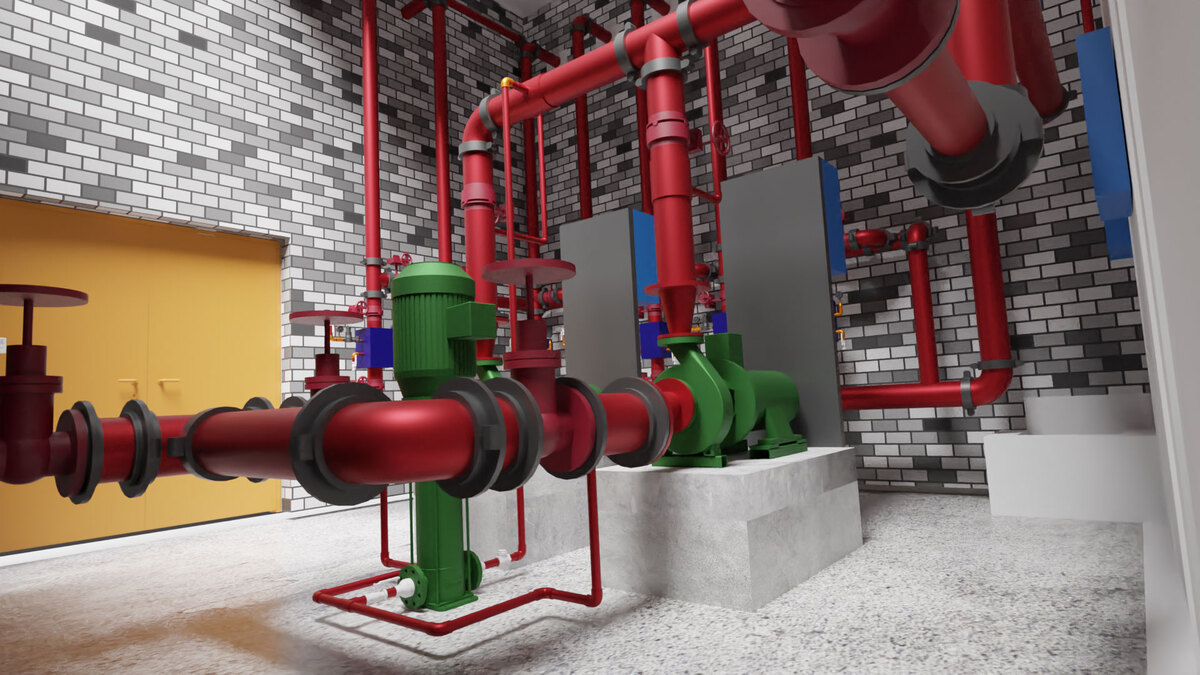
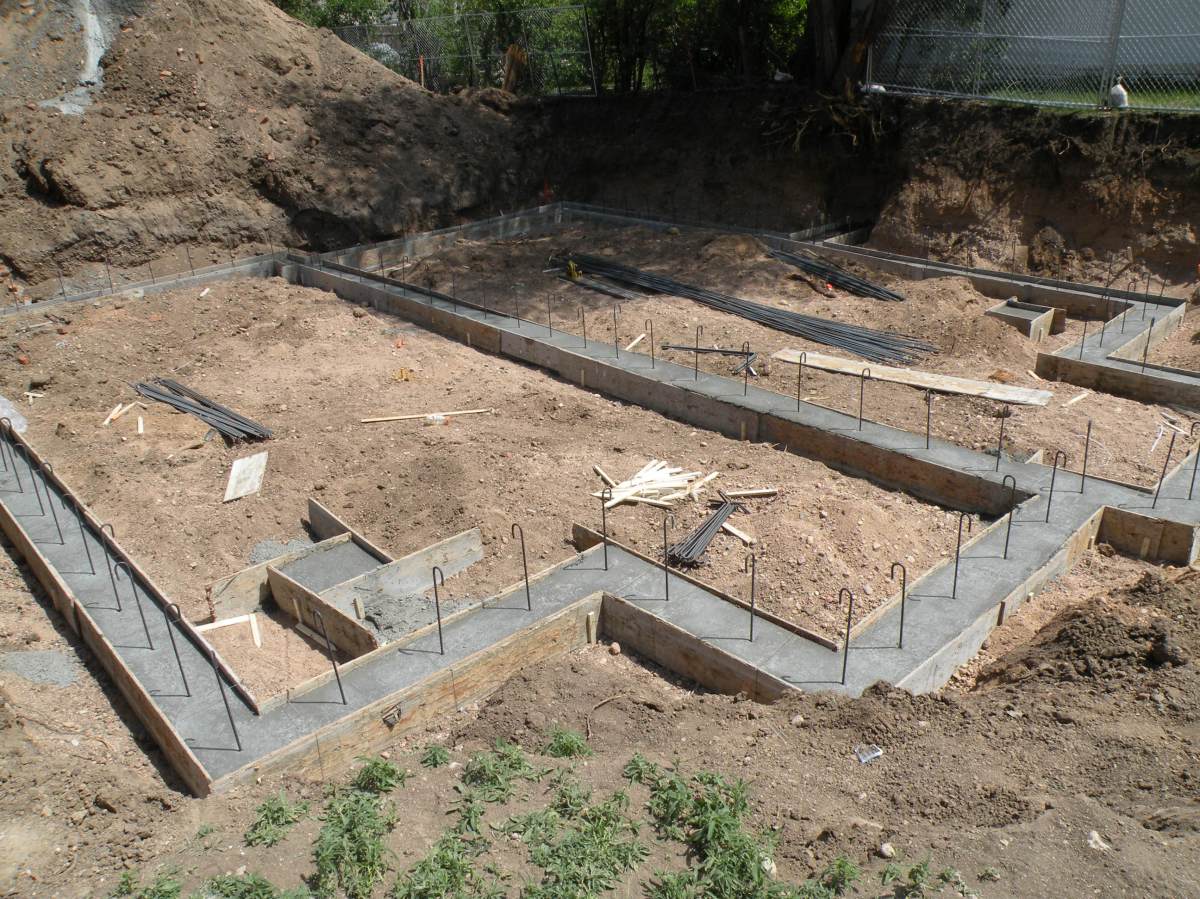
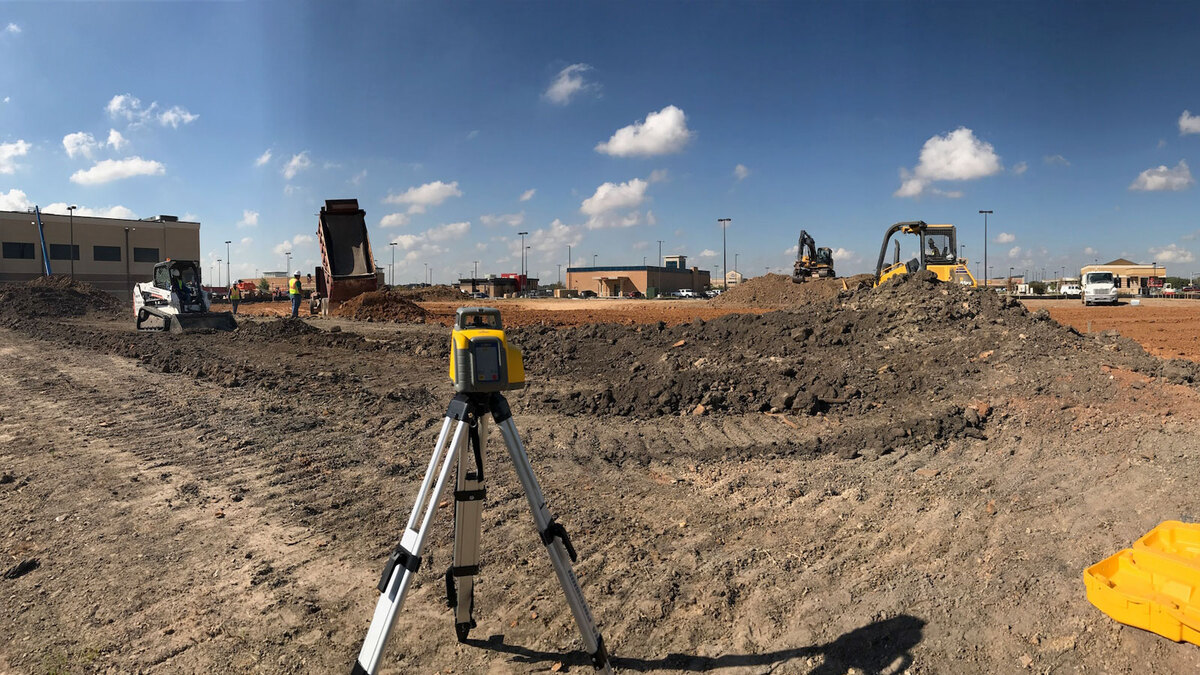
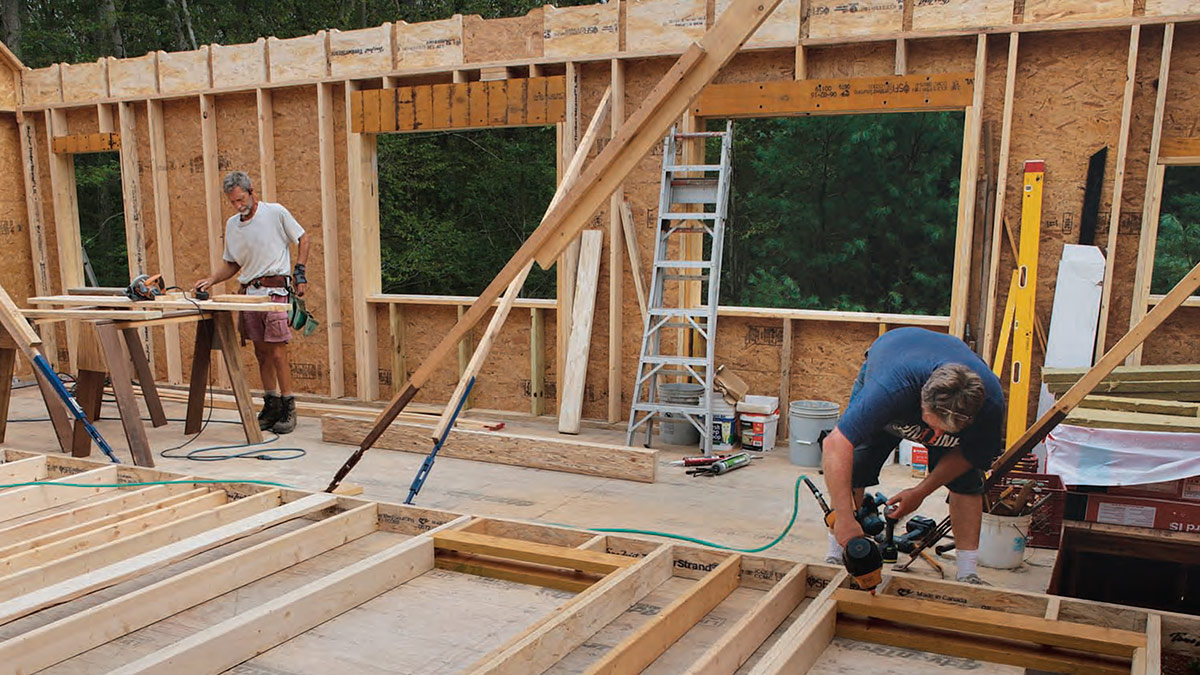
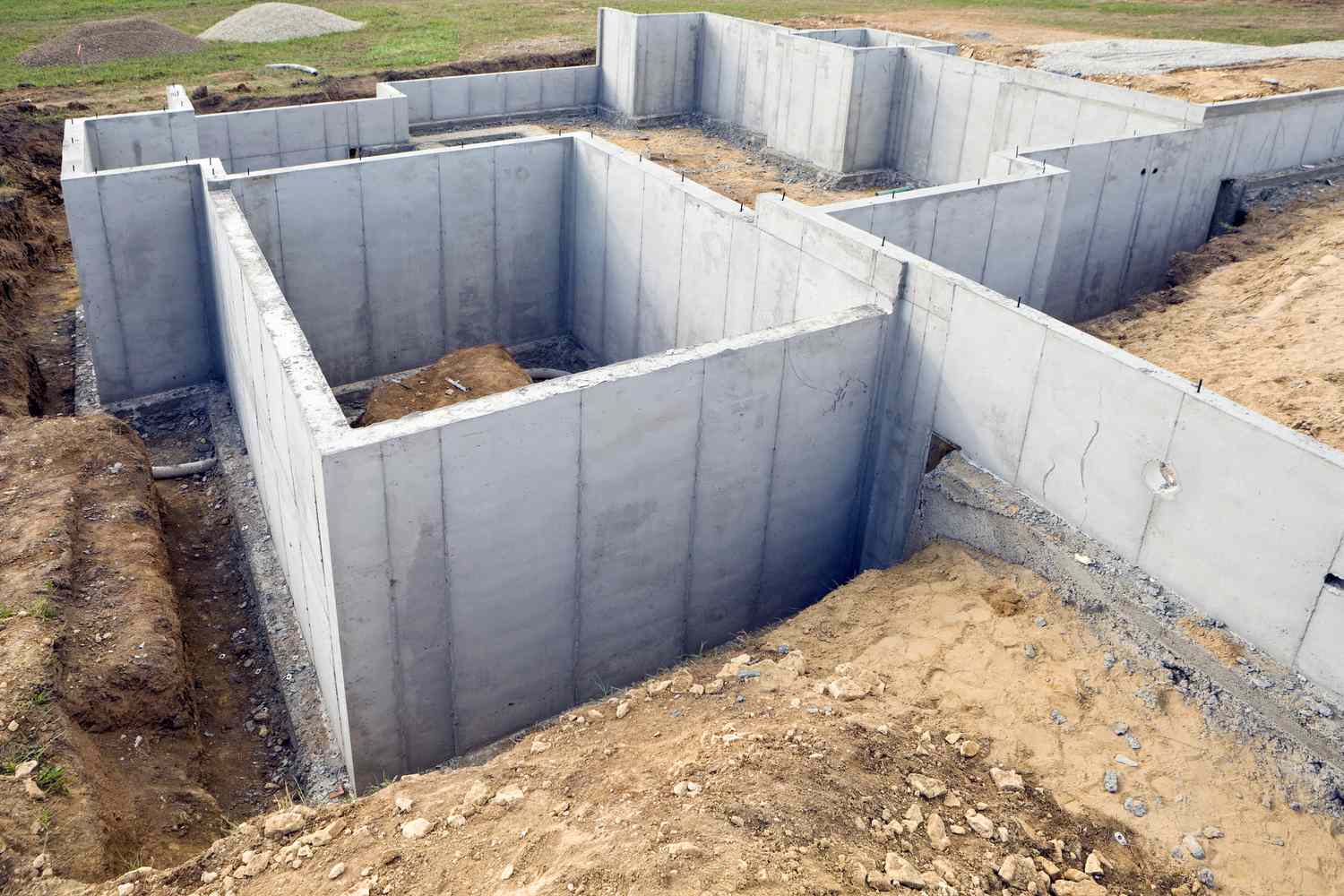
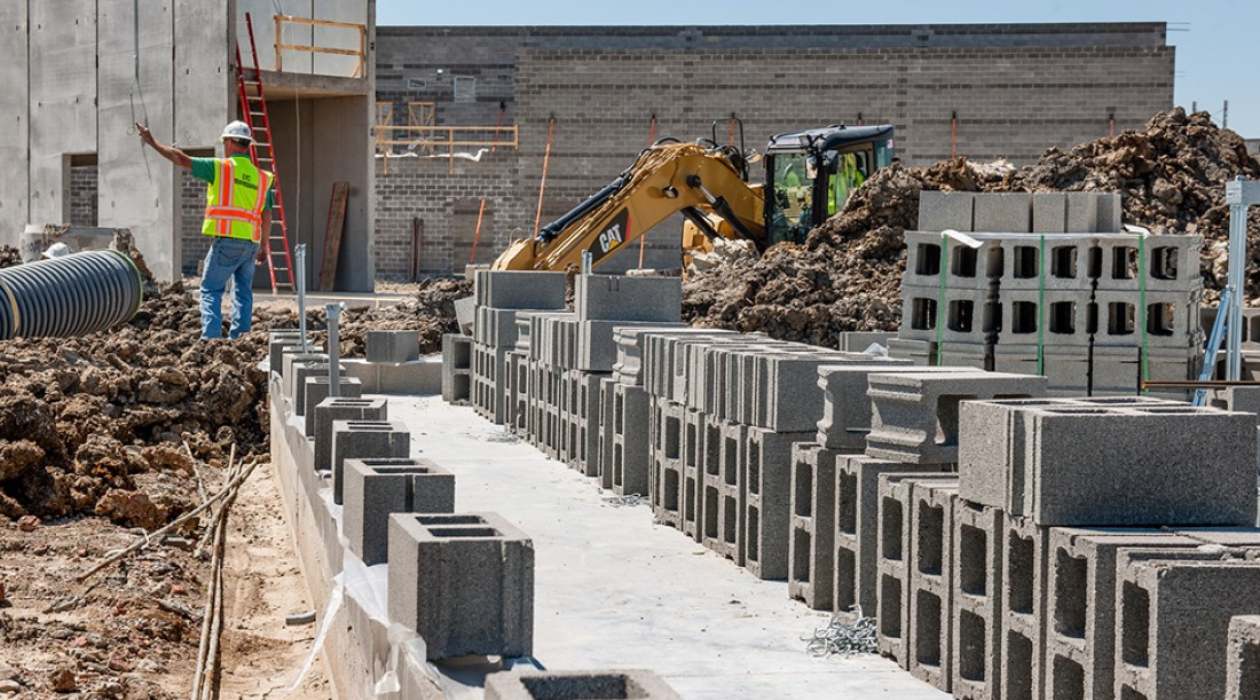







0 thoughts on “What Is A Construction Agreement”